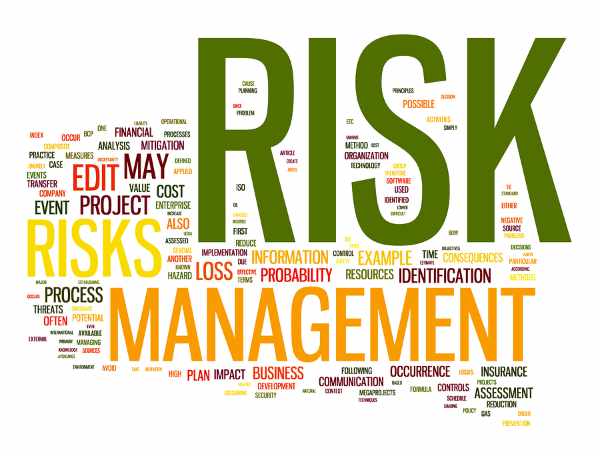 In the present day’s article is a few seemingly apparent idea; tips on how to measure buying and selling earnings. But, most merchants begin out measuring their revenue (and loss) completely mistaken, nevertheless it’s actually not their fault. Typical pondering and what’s sometimes unfold on the web or really useful by brokers and even in lots of books, simply isn’t how precise skilled merchants take into consideration measuring buying and selling efficiency or managing danger (they go hand-in-hand).
In the present day’s article is a few seemingly apparent idea; tips on how to measure buying and selling earnings. But, most merchants begin out measuring their revenue (and loss) completely mistaken, nevertheless it’s actually not their fault. Typical pondering and what’s sometimes unfold on the web or really useful by brokers and even in lots of books, simply isn’t how precise skilled merchants take into consideration measuring buying and selling efficiency or managing danger (they go hand-in-hand).
Therefore, in the present day, I need to provide you with a real-world lesson which might be not what you will have learn or heard elsewhere, on tips on how to correctly measure your buying and selling efficiency and danger out there. In spite of everything, this can be a fairly core-component to your buying and selling profession, and should you don’t have this half down how will you count on to truly become profitable out there? I feel you agree.
As you recognize should you’ve adopted my weblog for any size of time, I’m primarily a swing dealer and that’s the model of buying and selling we give attention to right here and that I educate my college students. Why is that essential? Nicely, as a result of relying on how you’re buying and selling, it would be best to measure your earnings in another way, and for swing merchants such as you and I, there’s one technique to measure earnings that’s clearly extra logical and easily “higher” than the remaining.
Nevertheless, earlier than we get into how I measure danger and reward as I commerce the markets, let’s be truthful and clear and go over the three main methods merchants measure this. We’ll talk about every of them after which I’ll clarify which one {most professional} merchants give attention to, and why.
The three Main Technique of Measuring Income:
- The “2%” Technique – A dealer picks a proportion of their account to danger per commerce (often 2 or 3%) and sticks with that danger proportion it doesn’t matter what. The essential thought right here is that as a dealer wins, they’ll steadily enhance their place measurement in a pure method relative to account measurement. Nevertheless, what often occurs is merchants lose (for quite a lot of causes mentioned in my different articles, try this lesson on why merchants fail for extra), after which they’re caught buying and selling smaller and smaller place sizes as a result of 2% rule (the two% means much less cash risked as you lose), making it tougher simply to get again to their beginning quantity, not to mention really become profitable!
- Measuring Pips or Factors – A dealer is targeted on pips or factors gained or misplaced per commerce. We aren’t going to focus a lot on this technique as a result of it’s so ridiculous. Buying and selling is a recreation of profitable and dropping cash, not factors or pips, so the concept that specializing in the pips will one way or the other enhance your efficiency by making you much less conscious of the cash, is simply foolish. You’ll at all times concentrate on the cash, it doesn’t matter what. Solely by correctly controlling your danger per commerce are you able to management your feelings, and meaning it’s essential know what you’re risking per commerce in financial kind ({dollars}, kilos, yen, and many others).
- Measuring primarily based on “R” or Fastened $ Threat – A dealer predetermines how a lot cash they’re snug with doubtlessly dropping per commerce and dangers that very same quantity on each commerce till they determine to alter that greenback quantity. The greenback quantity they’re risking per commerce is named “R” the place R = Threat. Reward is measured in multiples of Threat, so a 2R reward is 2 instances R, and many others. Sure, there’s some discretion concerned with this technique, however truthfully, discretion and intestine really feel in buying and selling is an enormous a part of what separates the winners from the losers. I’ll clarify extra as you learn on…
Truth: Measurement doesn’t matter.
A current examine I learn on what girls thought was crucial characteristic of a person…joking! Lol. Significantly although…
Threat per commerce needs to be a deeper thought course of, it needs to be private primarily based on circumstances and your complete danger profile and monetary place of the dealer. For instance:
Dealer A who dangers 2% of his $5,000 account his completely completely different life circumstances (funds, and many others.) than Dealer B who would additionally danger 2% of his $5,000 account, as advised by the two% rule.
Now, reply me this: Why on Earth would two TOTALLY DIFFERENT INDIVIDUALS RISK THE SAME PERCENTAGE of their buying and selling accounts when the precise amount of cash they are going to be risking from that 2% could or could not make sense given their particular circumstances? It doesn’t make sense does it? The two% rule is simply designed to be “simple” and to “make sense” for the common, starting dealer, however as I talked about earlier, all it actually does is trigger merchants to lose slowly. For a talented dealer, the two% rule is a loss of life sentence by a “one thousand cuts”, so to talk.
That is they the $ danger mannequin makes MUCH extra sense: As a result of every dealer has a distinct danger profile and private conditions that can (or ought to) issue into how a lot cash they’ll comfortably danger per commerce. The two% rule of danger is just an arbitrary quantity in greenback phrases, that will or could not find yourself making sense for any given dealer with distinctive circumstances and funds.
Additionally, in Foreign exchange, account measurement is actually arbitrary as a result of a Foreign exchange account is just a margin account, which implies it’s solely there to carry a deposit on a leveraged place. Any dealer who understands these information would by no means put ALL their buying and selling cash of their buying and selling account as a result of it’s merely not essential and isn’t as protected or profitable as holding that cash elsewhere.
The quantity you fund your buying and selling account with doesn’t essentially replicate all of the earnings it’s important to commerce and it doesn’t replicate your general internet value. Nevertheless, in inventory buying and selling, you want much more cash on deposit as a result of there’s much less out there leverage. Sometimes, if you wish to management 100k value of inventory it’s essential have 100k in your account. Foreign exchange is way more leveraged as I’ve already stated, and which means to regulate say 100k of foreign money, which is 1 normal lot, you solely want round $5,000 in your buying and selling account.
The Fable of Compounding and the two% Rule
One of many huge causes, if not thee greatest cause that so many individuals push the “2% cash administration rule” is that it appears to point out that as your account grows it is possible for you to to extend place measurement exponentially. In idea, that is right, however within the real-world, it’s garbage. Enable me to clarify…
Skilled merchants withdrawal cash (earnings) from their buying and selling accounts occasionally (sometimes as soon as a month or each 3) after which their account goes again right down to a “baseline degree. Therefore, with a 2% mannequin, you wouldn’t be rising place measurement perpetually, as a result of it is unnecessary to by no means withdrawal any buying and selling earnings, in spite of everything, the purpose of attempting to become profitable buying and selling is to truly use the cash, proper? The fastened $ danger mannequin is smart for skilled merchants who need to derive an actual earnings from their buying and selling; it’s how I commerce and it’s what number of others I do know commerce.
So, if buying and selling is a income enterprise and we withdraw earnings to stay/spend, then compounding is dramatically impacted and easily not what it appears. Don’t consider the whole lot you learn or hear on the web; there isn’t any technique of danger / cash administration that means that you can magically compound perpetually, it’s simply not practical.
Once you use the two% or % R rule, you’ll enhance place measurement as your account grows, however as soon as you’re taking cash out of the account, bang, your place measurement takes an enormous hit and you’re instantly buying and selling far smaller quantities than you simply have been. The fastened $ danger mannequin avoids this and retains the whole lot good, even and constant.

How a lot must you really Threat per commerce?
Okay, so by now you may be pondering “Nial, how do I understand how a lot I ought to danger per commerce?”
The reply is far much less advanced than what you may suppose. I consider in figuring out a greenback quantity that you’re snug with dropping on anybody commerce, and sticking to that greenback quantity at the least till you will have doubled or tripled your account, at which era you possibly can think about rising it.
This quantity must be an quantity that satisfies the next necessities:
- When risking this greenback quantity, you possibly can sleep sound at evening with out worrying about trades or checking on them out of your telephone or different gadget.
- When risking this greenback quantity, you aren’t glued to your pc screens turning into emotional at each tick for or in opposition to your place.
- When risking this quantity, you need to be capable to nearly ‘neglect’ about your commerce for a day or two at a time if it’s important to…and NOT be stunned by the result once you verify in your commerce once more. Assume, ‘set and neglect‘.
- When risking this quantity, you need to be capable to comfortably take 10 consecutive losses as a buffer, with out experiencing vital emotional or monetary ache. Not that you’d IF you’ve mastered an efficient buying and selling technique like my 3 core worth motion patterns, nevertheless it’s essential you enable that a lot buffer for psychological causes.
Fastened $ Threat vs. % Threat
“We have to be logical, what’s a real measurement of a merchants efficiency ?”
If you happen to’ve learn my different articles on this subject, I’ve argued for the fastened greenback danger mannequin and in opposition to the two% rule, however in case you missed that lesson, I need to talk about once more why I desire the previous to the latter…
The principle argument I make about this subject is that though the two% rule will develop an account comparatively rapidly when a dealer hits a collection of winners, it really slows account development after a dealer hits a collection of losers, and makes it very tough to convey the account again as much as the place it beforehand stood.
It’s because with the % R danger mannequin you commerce fewer tons as your account worth decreases, whereas this may be good to restrict losses, it additionally basically places you in a rut that could be very arduous to get out of. For instance, should you draw down 50% of $10,000, you’re at $5,000, and to get again to $10,000 it’s important to make 100% return, it’s a great distance again to interrupt even after which profitability utilizing the two% rule, since you are successfully buying and selling a a lot smaller place measurement when you draw down that far.
That is why I say the two% mannequin principally leads a dealer to “loss of life by one thousand cuts”, as a result of they have a tendency to only lose slowly because the place measurement shrinks after every loss. It deflates their confidence and so they find yourself over-trading as a result of merchants start to suppose “Since my place measurement is lowering on each commerce it’s OK if I commerce extra typically”…and while they might not suppose precisely that…it’s typically what occurs.
I personally consider the % R mannequin makes merchants lazy…it makes them take setups that they in any other case wouldn’t…as a result of they’re now risking much less cash per commerce they don’t worth that cash as a lot…it’s human nature.
Conclusion…
If you happen to solely keep in mind one factor from this lesson, do not forget that essentially the most logical method for a dealer with an efficient buying and selling edge to measure buying and selling efficiency or (earnings) is the fastened danger or R mannequin.
While I don’t advocate merchants use the “2% rule” or a set % mannequin, I DO advocate that you just danger a greenback quantity you’re completely snug with dropping on any given commerce. Bear in mind, you by no means know which commerce will lose and which can win over any collection of trades, so it’s silly to jack up your danger on a sure commerce simply since you “really feel” extra assured about it. If the quantity you’re risking per commerce is retaining you awake / unable to go to sleep at evening, you’re risking an excessive amount of, so dial it down.
Bear in mind, skilled merchants have discovered to make use of discretion or “intestine really feel” to gauge whether or not or to not take a selected commerce and they’re very choosy about which trades they take. This comes by way of display time and apply, so you need to spend a while creating your expertise on a demo buying and selling platform earlier than going stay. Though in the present day’s subject was cash administration, do not forget that it additionally takes sound buying and selling psychology and a superb buying and selling technique to turn out to be a profitable dealer. If you want to study extra about my fastened Threat cash administration technique and tips on how to commerce a chart primarily based on worth motion evaluation, try my superior worth motion buying and selling course for extra data.
Please Depart A Remark Under With Your Ideas On This Lesson…
If You Have Any Questions, Please Contact Me Right here.




